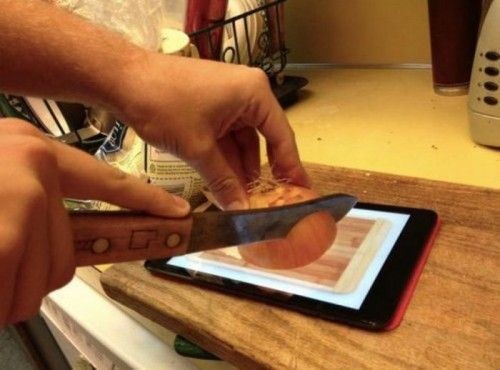Our goal is to support creative professionals, particularly artists, designers, and scientists, who push the limits of interactive technology
Related Contracts
Related projects

Ex)situ is interested in understanding the work practices of creative professionals, particularly artists, designers, and scientists, who push the limits of interactive technology. Our studies of these extreme users allow us to obtain empirical grounding for the theoretical concepts of instrumental interaction, information substrates and reciprocal co-adaption. We expect to transfer what we learn to the design of creative tools, first for expert users, then for non-specialists and non-professional users.
Research in Human-Computer Interaction (HCI) has moved beyond simply making technology more efficient and its users more productive: it now seeks to make people more creative by offering new expressive forms of interaction. We are interested in supporting the creative process of professional artists such as musicians, illustrators and car designers, but also of other professions such as scientists and doctors who must be creative in their everyday work. By addressing this diverse set of ‘lead users’, we also expect to transfer what we learn to the design of creative tools for non-specialists and non-professional users.
As our past studies have shown, professional artists still use traditional physical media in parallel with computers because they support forms of expression that digital tools cannot accurately reproduce, offering unique affordances, vocabularies and artistic styles. Unfortunately, physical and digital interfaces are difficult to integrate into a smooth, common workflow; each has distinct roles and serves different tasks. We hope to close this gap by creating novel user forms of interaction that combine physical and electronic tools.
Our earlier work explored how interactive paper technology can help professional composers transform their personal music representations as expressed on physical paper into music-programming software. More recently, we have been exploring how illustrators switch between computer and physical tools as they transition from early sketches to final illustrations. We have also observed how designers of concept cars communicate their designs to 3D clay modelers through sketches and physical models. We have also studied how doctors make complex diagnostic decisions through the use of paper-based and interactive emergency manuals in the operating room. Finally, we have started to study how movement experience in artistic disciplines such as dance can contribute to the design of novel movement-based interactions in HCI. We collaborate with professional choreographers to explore movement qualities and integrate them as a new interaction modality. The goal is to design interactive systems that support user agency, system guidance and novelty in the choreographic process.
While we plan to continue to enhance observed practices, we also plan to apply our findings to the fabrication of everyday objects. To this end, we will explore new interactive technologies that mix physical and virtual models during different phases of the fabrication process. We will also design tools and instruments that enable users to effectively interact with and switch among their different forms and representations. By providing similar tools and a similar environment to both designers and end-users, we will bridge the gap between design and use, expanding the scope of design to the full lifecycle of interactive artifacts, to better support creativity and reciprocal co-adaptation.